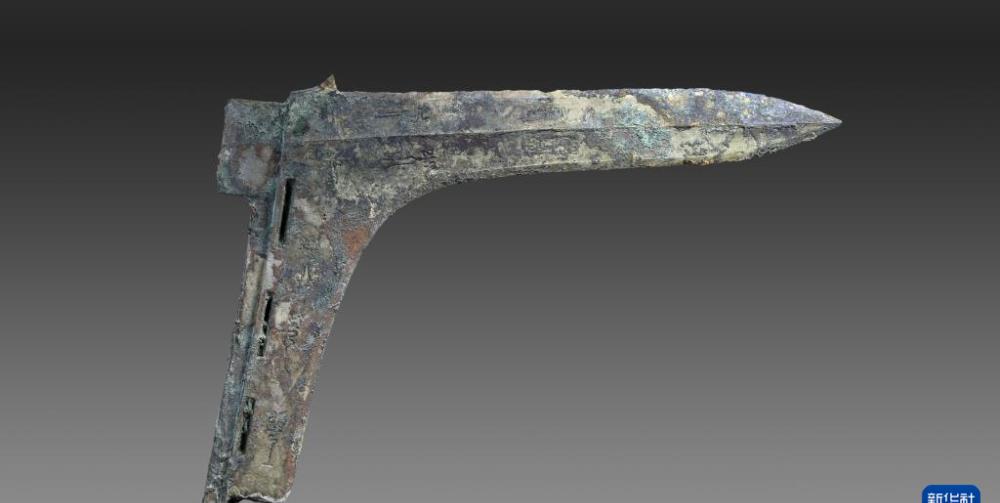
This is an artifact unearthed from the tomb (file photo). Xinhua News Agency (Courtesy of Jiangxi Provincial Institute of Cultural Relics and Archaeology)
The reporter learned from the expert discussion meeting on the archaeological excavation results of the Zhangshu Guozishan Tomb in Jiangxi Province held on the afternoon of December 25 that the Guozishan tomb excavated since 2017 may be the tomb of the Yue royal family and nobles in the middle of the Warring States period. More than 2,600 pieces (sets) of artifacts have been excavated from the tomb, including the inscription Weapon Ge, the main inscription display on which is the grandson of The King of Yue and a son of Fei, and experts speculate that the tomb owner is a descendant of Gou Jian. The excavation of the Guozishan tomb is a new breakthrough in the archaeology of Yue and Yue culture, and has important academic significance for the study of Vietnamese history.
The Guozishan tomb is located at the top of a hill about 300 meters west of the site of the Acropolis, a large city site of the Eastern Zhou Dynasty. Since 2017, with the support of the State Administration of Cultural Heritage, the Guozishan Archaeological Team composed of the Jiangxi Provincial Institute of Cultural Relics and Archaeology, the Institute of Archaeology of the Chinese Academy of Social Sciences and the Zhangshu City Museum has carried out continuous archaeological excavations and research on the tombs and surrounding areas with the concept of settlement archaeology.
The tomb is an east-west zigzag vertical pit tomb with slope-like tomb passages on the east and west sides, surrounded by nearly rectangular ditches. The burial chamber covers an area of about 230 square meters. The rafter chamber consists of a cushion wood below, a base plate, a perimeter side panel, an internal column, and an upper cover plate. It has been identified that nan wood is used in all parts of the rafters. The lid is covered with multiple layers of golden yellow veneer cut from fir wood. The rafter chamber is divided into 25 chambers. Seven coffins are placed in the rafters, the central ship-shaped canoe coffin is the main coffin, and the remaining 6 are funerary coffins.
The tomb was seriously damaged by early theft, and more than 2,600 pieces (sets) of artifacts have been excavated. Lacquered wood ware is the main type of utensils, but there are also metalware, ceramics, and jade ware. From the perspective of utensils, it includes a variety of categories such as ceremonial instruments, musical instruments, weapons, carriage and horse tools, and daily utensils. A kite with a total length of 2.3 meters was unearthed in the tomb, which is the longest kite found in tombs in the pre-Qin period. Weapons include go, halberd, sword, hammer, lacquered wood shield, etc., of which the lacquered shield has more than 30 sides. Unearthed bronze dove staffs were previously found only in the Wuyue Cultural Area in the lower reaches of the Yangtze River. Two inscriptions have inscriptions on the bronze ge (halberd).
Experts deduce from excavated relics and other excavations that the tomb era is in the middle of the Warring States period. The tomb owner has a high status, presumably a Yue royal family noble. The Guozishan tomb has prominent Yue cultural factors, a considerable number of Chu cultural factors and Qunshu cultural factors, reflecting the characteristics of the integration and coexistence of various cultural factors.
Source: Xinhua Net